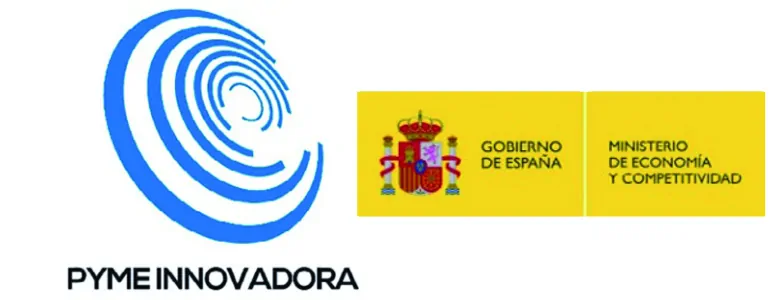
HORIZON EUROPE

 Europeo
Europeo
Specific Challenge:Increasing urbanisation and the transformation of rural economies and communities result in new types of rural-urban interaction and dependency, to which policies and governance approaches still have to fully adapt. Consolidated evidence is needed to assess the impact of such interaction on rural growth potential (in which there is an increasing interest worldwide) and understand, in concrete and operational terms, how linkages and dependencies between urban and rural activities affect the creation of added value and jobs. Recent studies have provided some evidence that well-functioning relationships between urban and rural areas can lead to higher growth rates in both. They may also deliver more sustainable, integrated and inclusive forms of development, building on local assets and natural resources to improve adaptation and resilience to global change. There is a need for thorough understanding and a consolidated conceptual framework is needed to tailor policy intervention at different scales so as to maximise rural job and growth creation on the basis of synergistic interaction.
Scope:Building on the EU typology of urban and rural areas[1]...
ver más
Specific Challenge:Increasing urbanisation and the transformation of rural economies and communities result in new types of rural-urban interaction and dependency, to which policies and governance approaches still have to fully adapt. Consolidated evidence is needed to assess the impact of such interaction on rural growth potential (in which there is an increasing interest worldwide) and understand, in concrete and operational terms, how linkages and dependencies between urban and rural activities affect the creation of added value and jobs. Recent studies have provided some evidence that well-functioning relationships between urban and rural areas can lead to higher growth rates in both. They may also deliver more sustainable, integrated and inclusive forms of development, building on local assets and natural resources to improve adaptation and resilience to global change. There is a need for thorough understanding and a consolidated conceptual framework is needed to tailor policy intervention at different scales so as to maximise rural job and growth creation on the basis of synergistic interaction.
Scope:Building on the EU typology of urban and rural areas[1] and on the outcomes of previous studies on rural-urban linkages, proposals should consolidate a conceptual and policy framework adapted to the diversity of European needs, including a well-argued approach to defining functional areas. They should analyse how European rural areas interact with other (in particular, urban) areas in their region or beyond, exploring endogenous conditions that enable them to interact and quantifying the importance of these connections for the rural economy and society. Activities should involve case studies covering a diverse set of territorial contexts and scales of analysis describing practical linkages between rural and urban activities, mutual dependencies, competitive or synergistic relationships, the distribution of value-adding production steps between rural and urban areas and the institutional and policy context. Proposals should involve participatory research identifying concrete opportunities for greater synergies and cooperation between urban and rural activities and communities, bottlenecks impeding synergistic development and concrete solutions to remove these bottlenecks. Activities should assess the effectiveness of a variety of existing or emerging governance approaches and instruments, including those provided by the European structural and investment funds, looking at official authorities but also at informal governance groups (e.g. local action groups). Concrete outputs could be a set of governance models and tools adapted to different types of situation. Such models should cater for better economic development as well as for modernisation of service delivery.
Activities should look at economic, environmental and social linkages and dependencies in an integrated way and examine various territorial settings, covering various forms of territorial interaction beyond city-hinterland relationships, including networks of small market towns and other types of more distant, cross-border or international interaction.
Projects should fall under the concept of the 'multi-actor approach'[2], involving local development or economic development bodies in rural and urban areas or representatives of both rural and urban economic players. Activities should involve engagement with government bodies at the appropriate scale, and with businesses and society. Targeted communication activities and easy-to-use policy-oriented outputs and training material will ensure maximum uptake of the results during the lifetime of the project and beyond. Networking activities between case-study areas and other areas interested in rural-urban synergies and leading to longer-term cooperation may be envisaged. Some cooperation activities with projects financed under topic RUR-2-2017 could be included.
The Commission considers that proposals requesting a contribution from the EU of up to EUR 6 million would allow this specific challenge to be addressed appropriately. Nonetheless, this does not preclude submission and selection of proposals requesting other amounts.
Expected Impact:Results are expected to improve policies for the management of rural-urban linkages through:
consolidation of a policy-oriented conceptual framework allowing the quantitative and qualitative description of a wide range of economic, environmental and social interactions and the definition of functional areas; improved understanding of functional rural-urban linkages and how these translate into varying development patterns, helping to explain growth and employment performance and sustainability; identification of opportunities for greater cross-sectoral cooperation and synergies; and provision of: a set of successful and transferable governance models applicable to different types of situation and rural settings; appropriate policy recommendations to enhance the development of these governance models at various scales; and communication and training material to facilitate dissemination of projects outcomes and foster their uptake by a significant number of relevant authorities across Europe. Better managed urban-rural relationships, improved governance and increased cross-sectoral cooperation will enable further growth and job creation in rural areas in the long term.
Cross-cutting Priorities:Socio-economic science and humanities
[1]http://ec.europa.eu/eurostat/statistics-explained/index.php/Urban-rural_typology;http://ec.europa.eu/eurostat/statistics-explained/index.php/Urban-rural_typology_update
[2]See definition of the 'multi-actor approach' in the introduction to this Work Programme part.
ver menos
Características del consorcio
 :
La ayuda es de ámbito europeo, puede aplicar a esta linea cualquier empresa que forme parte de la Comunidad Europea.
:
La ayuda es de ámbito europeo, puede aplicar a esta linea cualquier empresa que forme parte de la Comunidad Europea.
Características del Proyecto
Los costes de personal subvencionables cubren las horas de trabajo efectivo de las personas directamente dedicadas a la ejecución de la acción. Los propietarios de pequeñas y medianas empresas que no perciban salario y otras personas físicas que no perciban salario podrán imputar los costes de personal sobre la base de una escala de costes unitarios
Los otros costes directos se dividen en los siguientes apartados: Viajes, amortizaciones, equipamiento y otros bienes y servicios. Se financia la amortización de equipos, permitiendo incluir la amortización de equipos adquiridos antes del proyecto si se registra durante su ejecución. En el apartado de otros bienes y servicios se incluyen los diferentes bienes y servicios comprados por los beneficiarios a proveedores externos para poder llevar a cabo sus tareas
La subcontratación en ayudas europeas no debe tratarse del core de actividades de I+D del proyecto. El contratista debe ser seleccionado por el beneficiario de acuerdo con el principio de mejor relación calidad-precio bajo las condiciones de transparencia e igualdad (en ningún caso consistirá en solicitar menos de 3 ofertas). En el caso de entidades públicas, para la subcontratación se deberán de seguir las leyes que rijan en el país al que pertenezca el contratante
Características de la financiación
List of countries and applicable rules for funding: described in part A of the General Annexes of the General Work Programme.
Note also that a number of non-EU/non-Associated Countries that are not automatically eligible for funding have made specific provisions for making funding available for their participants in Horizon 2020 projects (follow the links to Australia, Brazil, Canada, China, Hong Kong & Macau, India, Japan, Republic of Korea, Mexico, Russia, Taiwan).
Eligibility and admissibility conditions: described in part B and C of the General Annexes of the General Work Programme
Proposal page limits and layout: Please refer to Part B of the standard proposal template.
Evaluation
3.1 Evaluation criteria and procedure, scoring and threshold: described in part H of the General Annexes of the General Work Programme
3.2 Submission and evaluation process: Guide to the submission and evaluation process
Indicative timetable for evaluation and grant agreement:
Information on the outcome of single-stage evaluation: maximum 5 months from the deadline for submission.
Signature of grant agreements: maximum 8 months from the deadline for submission.
Information on the outcome of two-stage evaluation:
List of countries and applicable rules for funding: described in part A of the General Annexes of the General Work Programme.
Note also that a number of non-EU/non-Associated Countries that are not automatically eligible for funding have made specific provisions for making funding available for their participants in Horizon 2020 projects (follow the links to Australia, Brazil, Canada, China, Hong Kong & Macau, India, Japan, Republic of Korea, Mexico, Russia, Taiwan).
Eligibility and admissibility conditions: described in part B and C of the General Annexes of the General Work Programme
Proposal page limits and layout: Please refer to Part B of the standard proposal template.
Evaluation
3.1 Evaluation criteria and procedure, scoring and threshold: described in part H of the General Annexes of the General Work Programme
3.2 Submission and evaluation process: Guide to the submission and evaluation process
Indicative timetable for evaluation and grant agreement:
Information on the outcome of single-stage evaluation: maximum 5 months from the deadline for submission.
Signature of grant agreements: maximum 8 months from the deadline for submission.
Information on the outcome of two-stage evaluation:
For stage 1: maximum 3 months from the deadline for submission.
For stage 2: maximum 5 months from the deadline for submission.
Signature of grant agreements: maximum 8 months from the deadline for submission.
Provisions, proposal templates and evaluation forms for the type(s) of action(s) under this topic:
Research and Innovation Action:
Specific provisions and funding rates
Standard proposal template
Standard evaluation form
H2020 General MGA -Multi-Beneficiary
Annotated Grant Agreement
Additional provisions:
Horizon 2020 budget flexibility
Technology readiness levels (TRL) – where a topic description refers to TRL, these definitions apply.
Financial support to Third Parties – where a topic description foresees financial support to Third Parties, these provisions apply.
Open access must be granted to all scientific publications resulting from Horizon 2020 actions, and proposals must refer to measures envisaged. Where relevant, proposals should also provide information on how the participants will manage the research data generated and/or collected during the project, such as details on what types of data the project will generate, whether and how this data will be exploited or made accessible for verification and re-use, and how it will be curated and preserved. This topic participates per default in the open access to research data pilot which aims to improve and maximise access to and re-use of research data generated by projects:
The pilot applies to the data needed to validate the results presented in scientific publications. Additionally, projects can choose to make other data available for open access and need to describe their approach in a Data Management Plan (to be provided within six months after the project start).
Note that the evaluation phase proposals will not be evaluated more favourably because they are part of the Pilot, and will not be penalised for opting out of the Pilot.
Projects can at any stage opt-out of the pilot.
The legal requirements for projects participating in this pilot are in the article 29.3 of the Model Grant Agreement
Further information on the Open Research Data Pilot is made available in the H2020 Online Manual.
8. Additional documents
H2020 Work Programme 2016-17: Introduction
H2020 Work Programme 2016-17: Food security, sustainable agriculture and forestry, marine and maritime and inland water research and the bioeconomy
H2020 Work Programme 2016-17: Dissemination, Exploitation and Evaluation
H2020 Work Programme 2016-17: General Annexes
Legal basis: Horizon 2020 - Regulation of Establishment
Legal basis: Horizon 2020 Rules for Participation
Legal basis: Horizon 2020 Specific Programme
Información adicional de la convocatoria
Otras ventajas
Ayudas Similares

| Abierta

| Próximamente

| Abierta

